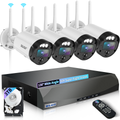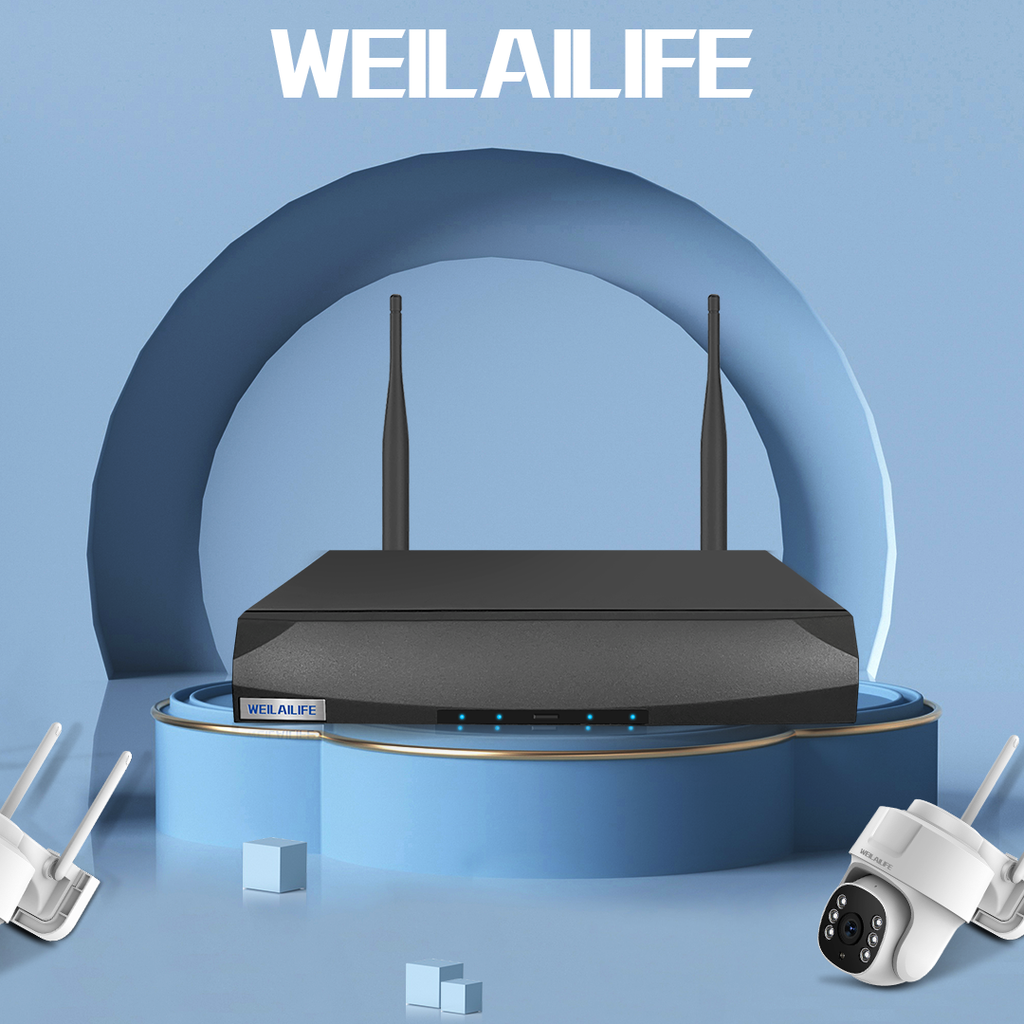Evolution of Video Surveillance Systems: A WEILAILIFE Perspective
In this era of technological marvels, the realm of video surveillance has woven itself seamlessly into the fabric of our lives, transitioning from bustling public spaces to the very sanctuaries of our homes. The ubiquitous utilization of video surveillance systems finds its roots in the fundamental assurance they bring, particularly in matters of security. As the old adage goes, "Seeing is believing," and video surveillance systems cater to this intrinsic human need. But how did these systems evolve? What pivotal stages have shaped their trajectory? Join us on a journey through the historical epochs that have molded these systems into their current form.
**The First Generation: The Analog Era**
The initial phase of video surveillance systems witnessed the ascendancy of traditional analog monitoring, centering around matrices. These systems comprised analog cameras, specialized video cables, switching matrices, monitors, analog recording equipment, and trusty videotapes. The emphasis lay in addressing limited monitoring scopes over short distances.
Key Features:
- All video signals were harnessed, transmitted, and stored in analog format, ensuring a certain degree of quality.
- Following decades of developmental strides, the technology matured into a stable force.
However, this generation exhibited distinct limitations:
- Constrained scope and range, rendering remote management and access unfeasible.
- Expansion of system capacity was an intricate endeavor, accompanied by substantial costs.
- Extensive reliance on tape storage and manual queries contributed to intricate management and maintenance.
- Integration with other security systems remained a formidable challenge.
**The Second Generation: The Semi-Digital Revolution**
The dawn of the second generation heralded the semi-digital age, characterized by the rise of digital video recorders (DVRs). These systems harnessed the computational prowess of cutting-edge technology, offering users a more intuitive interface and streamlined management. This stage, building upon the foundation laid by its analog precursor, addressed many challenges that analog matrices could not surmount.
Key Features:
- Video and audio signals transitioned to digital form for acquisition and storage, ensuring an elevated quality standard.
- Digitized storage amplified the processing and querying capabilities of recorded content.
- Seamless backward compatibility with first-generation analog systems, enabling upgrades and transformations.
- Networking capabilities of DVR systems, along with the introduction of optical transceivers, resolved long-distance transmission hurdles. This innovation met the demand for remote monitoring and seamless resource sharing.
- Embedded DVR systems, heralding enhanced reliability and user-friendly installation, contributed to widespread adoption.
The maturation of DVR technology expedited the civilian application of video surveillance, pushing it to the forefront of mainstream usage. However, certain shortcomings also emerged:
- DVR systems were still entrenched in analog transmission for point-to-center surveillance, demanding elaborate cable or fiber-optic setups, thereby incurring substantial construction and maintenance expenses.
- Limited autonomous capacity rendered them suboptimal for centralized recording and unified video file management.
- Network functionality for DVR systems remained constrained, presenting complexities in large-scale applications, management, and upkeep.
**The Third Generation: The Digital Frontier**
The third generation, epitomized by network video, marked the complete transition into fully digital video surveillance systems. Front-end image capture and transmission occurred in digital format, with networks serving as the conduit for data transfer. This evolution facilitated video transmission over the internet and granted access and control over the entire surveillance ecosystem via designated control hosts.
Key Features:
- Tiered structure offering unparalleled flexibility, scalability, and compatibility with diverse network topologies.
- Cost-effective foundational infrastructure, streamlined management hierarchies, and substantial savings in cable deployment.
- Straightforward installation and maintenance, complemented by an array of solution options.
- Seamless lossless video exchange, replication, and storage without distance constraints.
- Harnessing mature TCP/IP network technology, providing a myriad of access methods.
- Seamless integration with existing and new applications, facilitating unified multi-network environments.
At present, the third generation stands as the most widely embraced paradigm. Yet, the first and second generations still find relevance in specific domains. This evolution underscores the gradual march towards intelligent video surveillance systems, becoming increasingly ingrained in the fabric of our lives. Surveillance system manufacturers are venturing into producing personalized surveillance solutions, indicating a promising future where these advanced products will be readily accessible to all.









